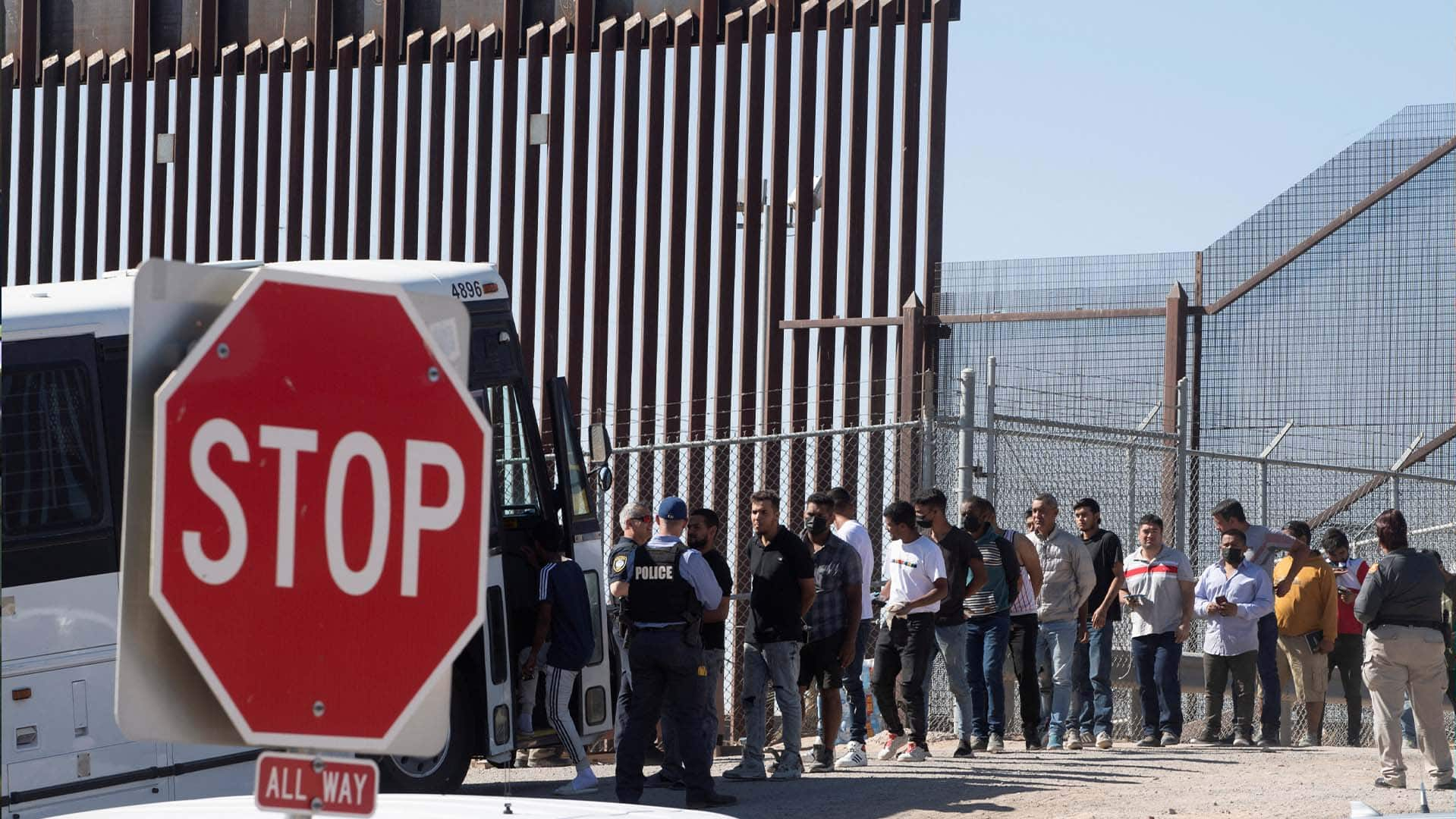Asylum restrictions expire in U.S. for migrants, legal challenges begin | CBC News
The United States entered a new immigration enforcement era on Friday, ending a three-year-old asylum restriction brought on by the COVID-19 pandemic — although legal challenges threatened to blunt new attempts by the Biden administration to ensure a more manageable flow of migrants.
Three-year-old asylum restrictions came into effect in 2020 via Title 42, part of a 1944 public health law that allows curbs on migration in the name of protecting public health.
Even as Title 42 expired at midnight, migrants along the border were still wading into the Rio Grande on the Texas-Mexico border, taking their chances despite pleas from American officials to turn back.
Others hunched over cellphones trying to access an appointment app, a centrepiece of new measures enacted by the Biden administration in hopes that the tide of migrants will be more manageable.
Due to the high volume of arrivals, agents on Wednesday began releasing some migrants without a notice to appear in immigration court, where they can make an asylum claim, telling them to report to an immigration office later.

But late Thursday night, a federal judge in Florida — appointed by Donald Trump — who was considering a challenge from that state’s attorney general blocked such releases, saying they failed to follow proper regulatory procedures.
U.S. Customs and Border Protection called the ruling “harmful” and said it would “result in unsafe overcrowding” at border facilities.
Holding facilities already full
More than 27,000 people were in Customs and Border Protection custody, and holding facilities along the border already were far beyond capacity. Officials had orders to release people with a notice to report to an immigration office in 60 days if facilities reached 125 per cent capacity or when they were held 60 hours or more.
Homeland Security Secretary Alejandro Mayorkas told MSNBC on Friday that while most individuals would be removed, those who are not would be screened and vetted before being released ahead of legal proceedings when Border Patrol holding facilities are too crowded — a practice used by previous administrations.
“The Department of Justice is considering its options,” Mayorkas said of the Florida ruling.
Migrants shelters at the southern U.S. border are preparing for an influx of people as the country’s Title 42 immigration policy is set to expire. Authorities are urging people to enter the U.S. lawfully, but the already strained system is having trouble keeping up with cases.
Under U.S. and international law, anyone who comes to the U.S. can ask for asylum. But the Biden administration is now turning away anyone seeking asylum who didn’t first seek protection in a country they travelled through or didn’t first apply online. It’s a version of a Trump administration policy that was overturned by the courts and is unpopular with some progressive members of Biden’s Democratic Party.
Advocacy groups sued to block that new rule minutes before it took effect. The lawsuit, filed in federal court in San Francisco by the Center for Gender & Refugee Studies and other groups, alleges the Biden administration “doubled down” on the policy proposed by Trump that the same court rejected. The administration has said its new rule is substantially different.
The demographics of who is reaching the border have changed in recent years, due to the pandemic and factors like crime, corruption and lack of opportunity in individual countries.
The U.S. has said it will accept up to 30,000 people per month from Venezuela, Haiti, Nicaragua and Cuba, as long as they come by air, have a sponsor and apply online first. The government will also allow up to 100,000 people from Guatemala, El Salvador and Honduras who have family in the U.S. if they, too, apply online.
Border officials will otherwise deport people, who will be sent back over the border to Mexico. Other migrants also may be allowed in if they apply through the CBP One app. Right now, 740 people per day have been allowed in using the app, which is being increased to 1,000 per day.
U.S. officials plan to open 100 regional migration hubs across the Western Hemisphere.
Border agent union blasts Biden
The Biden administration sought to end Title 42 almost exactly one year ago, but challenges by Republican attorney generals in several states were allowed in court, delaying the move. Migrants have been expelled more than 2.7 million times under Title 42, a total that included many repeat crossers
Despite that, the National Border Patrol Union posted on Friday that “one man is responsible for every single bit of it, with the worst still to come,” alongside a picture of President Joe Biden.

“This is by far the worst sustained disaster that any BP agent, active or retired, has ever seen at our border,” the union account said.
In Matamoros, Mexico, on Thursday afternoon, groups crossed the Rio Grande River in chin-high water. Some carried tiny babies and bags of belongings above their heads to make it into Brownsville, Texas.
In El Paso, Texas, hundreds of migrants camped out on downtown streets trying to figure out where to go next after crossing the border from Juarez, Mexico.
More migrants — including families with young children wrapped in Mylar blankets — awaited processing while penned between two towering border walls in San Diego, across from Tijuana, Mexico.
Even before Title 42 expired, the U.S. was grappling with large numbers of migrants, with some Republican politicians from southern states transporting them to northern states.
Republicans fault Biden for easing the more restrictive Trump policies. Biden has blamed Congress for not passing comprehensive immigration reform. On multiple occasions in the past 15 years, talks were held on such reform, including on one occasion when Trump would have received significant funding for his desired southern border wall.
For all the latest World News Click Here
For the latest news and updates, follow us on Google News.


